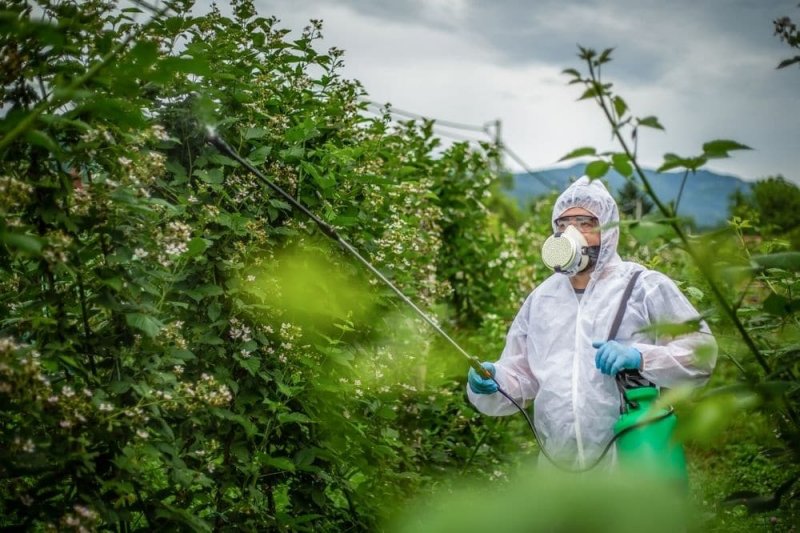
With modern agriculture, few innovations have been as transformative, yet as contentious, as chemical pesticides. Heralded as a cornerstone of the Green Revolution, these compounds—ranging from herbicides that kill weeds to insecticides that eradicate pests and fungicides that counter plant diseases—promised a future of abundant food, liberated from the whims of nature and the ravages of crop destroyers. For decades, they delivered on a significant part of this promise, dramatically increasing yields and contributing to global food security.
However, beneath this veneer of agricultural success lies a complex and often insidious truth. The relentless application of chemical pesticides over the past half-century has cast a long shadow, manifesting in far-reaching impacts on environmental integrity, human health, and even the very economic fabric of agricultural communities. What began as a solution has, in many respects, evolved into a double-edged scythe, cutting down pests and weeds but also carving a path of unintended consequences.
The Environmental Reverberations: A Silent Contamination
The journey of a chemical pesticide rarely ends where it is applied. Its environmental footprint ripples outwards, contaminating various ecological compartments and disrupting delicate natural balances.
1. Soil Health Erosion: The very ground beneath our feet, the bedrock of agriculture, suffers immensely. Pesticides, particularly broad-spectrum varieties, do not discriminate between harmful organisms and beneficial soil microbes. These microscopic life forms are crucial for nutrient cycling, organic matter decomposition, and maintaining soil structure. Their destruction leads to nutrient imbalances, reduced soil fertility, increased erosion, and a diminished capacity for plants to absorb vital nutrients, often necessitating even more chemical inputs.
2. Waterway Contamination: Perhaps the most visible environmental impact is water pollution. Rain and irrigation wash pesticides from fields into rivers, lakes, and oceans through surface runoff. These chemicals can also leach through the soil, contaminating groundwater aquifers—our primary source of drinking water. In aquatic ecosystems, pesticides can cause mass mortality of fish and other organisms, contribute to eutrophication (excessive nutrient enrichment leading to algal blooms and oxygen depletion), and accumulate in the food chain, affecting wildlife that depends on these water sources.
3. Air Pollution and Drift: Pesticides are not confined to land or water; they become airborne too. During application, especially through spraying, significant portions can drift away from the target area, carried by wind for miles. This "pesticide drift" can contaminate organic farms, natural habitats, and residential areas, exposing non-target plants, animals, and humans to hazardous chemicals. Volatilization, where chemicals evaporate into the atmosphere, further contributes to air pollution, potentially leading to respiratory issues and other health problems for nearby communities.
4. Biodiversity Decimation: The non-target impact on biodiversity is one of the most alarming consequences. *Pollinators: Insects like bees, butterflies, and other vital pollinators are highly susceptible to insecticides. Neonicotinoids, a widely used class of insecticides, have been strongly linked to Colony Collapse Disorder in honeybees, threatening not only honey production but also the pollination of numerous crops essential for human food supply. *Beneficial Insects: Many insects are natural predators of agricultural pests.
Broad-spectrum pesticides eliminate these beneficial insects, disrupting natural pest control mechanisms and often leading to secondary pest outbreaks, where new pests emerge due to the absence of their natural enemies. *Birds and Mammals: Birds and small mammals can be poisoned directly by consuming contaminated seeds or insects, or indirectly by consuming prey that has accumulated pesticides in its tissues (bioaccumulation). This can lead to reproductive failures, developmental abnormalities, and even death, climbing up the food chain to apex predators.
5. The Resistance Treadmill: The very pests pesticides are designed to eliminate often evolve resistance over time. Through natural selection, individuals with genetic mutations that allow them to survive exposure reproduce, passing on their resistance. This "pesticide treadmill" forces farmers to apply higher doses, more frequently, or switch to increasingly potent and often more hazardous chemicals, escalating the environmental and health risks while driving up costs.
A Toxin in the System: Human Health Implications
The presence of pesticide residues in our food, water, and air means that humans are perpetually exposed to these chemicals, often without conscious awareness. The health implications range from acute poisoning to chronic diseases that emerge over years or even decades.
1. Acute Exposures: Farmworkers and applicators, who are in direct contact with concentrated forms of pesticides, face the highest risk of acute poisoning. Symptoms can range from skin rashes, nausea, vomiting, dizziness, and respiratory problems to severe neurological damage, paralysis, and even death in cases of high exposure or accidental ingestion. In many developing countries, lax safety regulations and inadequate protective equipment exacerbate these risks.
2. Chronic Exposures: The general population is more likely to experience chronic exposure through residues in food, contaminated drinking water, and air drift from agricultural fields. The cumulative effect of long-term, low-level exposure is a growing area of concern. Scientific studies have linked chronic pesticide exposure to a litany of serious health conditions: *Neurological Disorders: Increased risk of Parkinson's disease, Alzheimer's disease, and cognitive impairments, particularly in children. Some pesticides are neurotoxins that damage the central nervous system.
*Cancers: Various types of cancer, including non-Hodgkin lymphoma, leukemia, brain tumors, and prostate, breast, and ovarian cancers, have been associated with prolonged pesticide exposure. *Endocrine Disruption: Many pesticides are endocrine-disrupting chemicals (EDCs), mimicking or blocking hormones in the body. This can lead to reproductive problems (reduced fertility, birth defects), developmental issues, and disruption of thyroid function. *Immune System Suppression: Weakened immune systems can make individuals more susceptible to infections and diseases. *Respiratory Problems: Asthma and other respiratory ailments, especially for those living near sprayed fields.
Vulnerable populations, such as children, pregnant women, and the elderly, are particularly susceptible to the harmful effects of pesticides due to their developing bodies, lower body mass, and compromised immune systems. Even minute exposures during critical developmental windows can have profound and lasting impacts.
The Socio-Economic Ripple Effect
Beyond environmental and health concerns, the reliance on chemical pesticides also creates complex socio-economic challenges. Farmers, particularly those in developing nations, can become trapped in a "pesticide treadmill" where escalating costs for chemicals and the need for more frequent applications lead to mounting debt. This economic burden can push smallholder farmers deeper into poverty.
Furthermore, the loss of biodiversity, particularly of pollinators, directly impacts crop yields and necessitates costly manual pollination or alternative solutions. Trade implications also arise, as countries impose strict maximum residue limits (MRLs) on imported produce, creating barriers for farmers unable to meet these standards.
Forging a Sustainable Path: Alternatives and Solutions
Recognizing the multifaceted impacts of chemical pesticides, a global imperative has emerged to transition towards more sustainable and holistic pest management strategies.
1. Integrated Pest Management (IPM): IPM is a comprehensive approach that prioritizes prevention, monitoring, and the use of multiple tactics, reserving chemical interventions as a last resort. It integrates biological controls (using natural predators), cultural practices (crop rotation, resistant varieties), mechanical controls (weeding), and targeted chemical applications to minimize pesticide use while effectively managing pests.
2. Organic and Regenerative Agriculture: These systems fundamentally reject synthetic pesticides and fertilizers. By focusing on soil health, biodiversity, and ecological balance, they create resilient farming systems that are naturally less prone to major pest outbreaks. Practices like cover cropping, composting, and diversified crop rotations build healthy soil ecosystems that support beneficial insects and enhance plant health.
3. Biological Control: Introducing or enhancing natural enemies of pests (e.g., ladybugs for aphids, parasitic wasps) can significantly reduce pest populations without recourse to chemicals.
4. Policy and Regulation: Stronger governmental policies that ban highly hazardous pesticides, enforce stricter residue limits, and provide financial incentives for sustainable farming practices are crucial. Increased investment in research and development of non-chemical solutions is also vital.
5. Consumer Awareness and Demand: Informed consumers play a powerful role. By demanding organic and sustainably produced food, they signal to the market that there is a preference for products grown with minimal chemical inputs, thereby driving systemic change from the bottom up.
Conclusion
The story of chemical pesticides is a poignant reminder that technological solutions, while offering immediate benefits, often carry unforeseen long-term consequences. While they undeniably contributed to boosting agricultural productivity and alleviating hunger, the mounting evidence of their environmental degradation, their insidious impact on human health, and their socio-economic pitfalls demands a fundamental re-evaluation of our approach to food production.
The double-edged scythe has cut deeply, leaving scars on our ecosystems and our bodies. The path forward is not one of outright rejection without viable alternatives, but rather a strategic shift towards ecological resilience, innovative sustainable practices, and a profound respect for the intricate balance of nature. By embracing IPM, organic farming, and advocating for responsible policies, we can cultivate a future where food security is achieved in harmony with planetary health, ensuring that the bounty of the earth nourishes rather than diminishes us.







0 Comments
Post Comment
You will need to Login or Register to comment on this post!